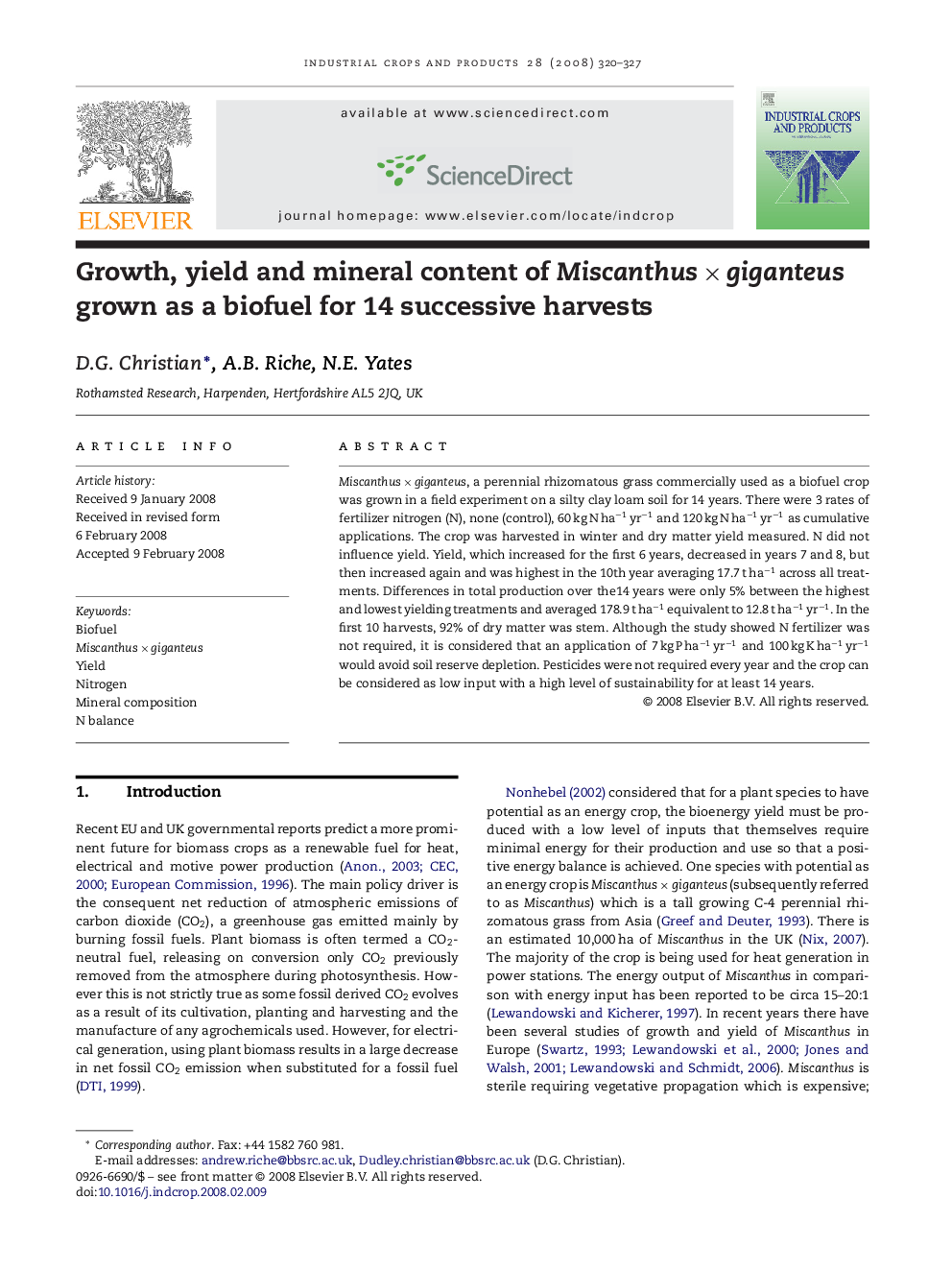| Article ID | Journal | Published Year | Pages | File Type |
|---|---|---|---|---|
| 4515146 | Industrial Crops and Products | 2008 | 8 Pages |
Miscanthus × giganteus, a perennial rhizomatous grass commercially used as a biofuel crop was grown in a field experiment on a silty clay loam soil for 14 years. There were 3 rates of fertilizer nitrogen (N), none (control), 60 kg N ha−1 yr−1 and 120 kg N ha−1 yr−1 as cumulative applications. The crop was harvested in winter and dry matter yield measured. N did not influence yield. Yield, which increased for the first 6 years, decreased in years 7 and 8, but then increased again and was highest in the 10th year averaging 17.7 t ha−1 across all treatments. Differences in total production over the14 years were only 5% between the highest and lowest yielding treatments and averaged 178.9 t ha−1 equivalent to 12.8 t ha−1 yr−1. In the first 10 harvests, 92% of dry matter was stem. Although the study showed N fertilizer was not required, it is considered that an application of 7 kg P ha−1 yr−1 and 100 kg K ha−1 yr−1 would avoid soil reserve depletion. Pesticides were not required every year and the crop can be considered as low input with a high level of sustainability for at least 14 years.
